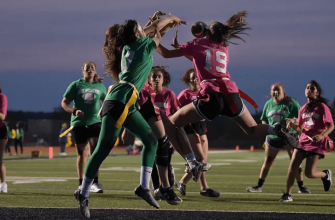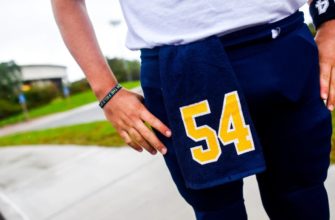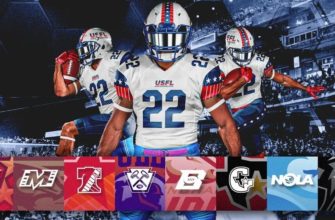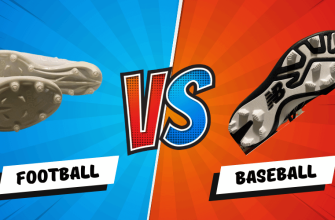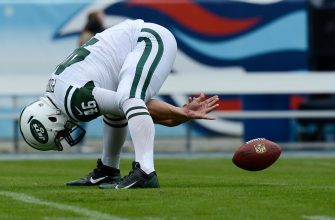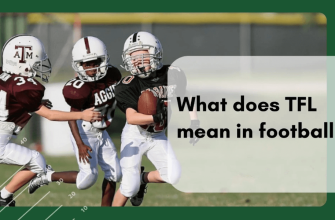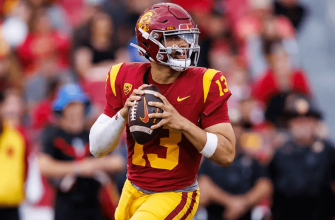To determine how many footballs are used in an NFL game, delve into the section “How Many Footballs Are Used in an NFL Game?” This section explores the standard number of footballs used, factors influencing the quantity, football lifespan, importance of maintenance, football manufacturers’ role, potential controversies, and advancements in football technology.
The Standard Number of Footballs Used
In an NFL game, 12 footballs are required – six for the home team and six for the visitors. The NFL inspects and approves them before each game. Referees then check them during the game.
Prior to 2015, each team could use their own footballs on offense. But after a controversy, stricter regulations were enforced. Now, all footballs used on offense must be supplied by the home team and meet inflation requirements.
Sometimes, teams try to gain an advantage by manipulating or tampering with the footballs – like in the ‘Deflategate’ scandal. This highlights how important it is to have fair play and regulated footballs. The NFL continues to enforce strict rules and inspections. So, next time you watch a game, remember each touchdown pass or field goal is made possible by one of those carefully chosen and regulated footballs.
Official NFL Rules on Football Usage
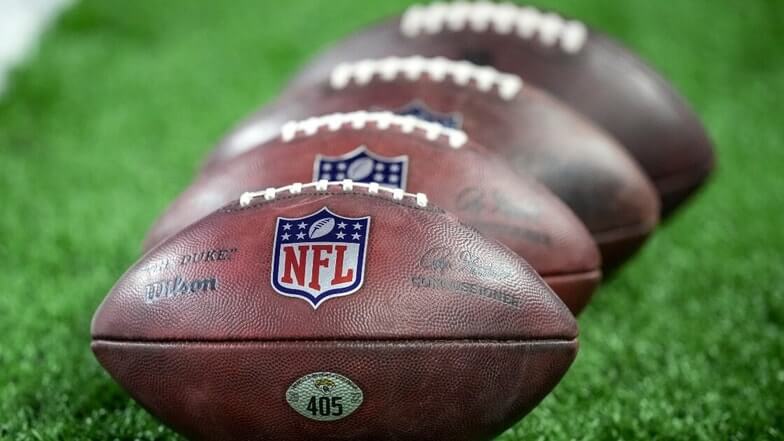
The NFL has rules for the usage of footballs during games – to make sure it’s fair and consistent.
Let’s look at the table of details:
| Rule | Details |
|---|---|
| Total number | 36 |
| Game balls | 24 |
| Kicking balls | 12 |
| Ball inspection | Prior to the game |
The teams can provide their own brand of footballs, as long as they meet NFL standards. Like size, weight, and inflation levels.
The “Deflategate” scandal happened during a playoff matchup. An equipment manager gave an opposing team underinflated footballs for an unfair advantage. This caused an investigation by the league.
We can see the NFL pays attention to every detail of games – even the number of footballs. All to ensure fairness. Trying to find enough footballs is like finding matching socks in a dryer full of mischief.
The Number of Footballs Prepared for Each Game
The number of footballs needed for each NFL game is a vital part of the sport. This ensures there are enough balls for a seamless and uninterrupted gameplay. Let’s have a peek at how many footballs are used in an NFL game.
For a clearer understanding of the significance of the number of footballs used in an NFL game, have a look at this table:
| Game Type | Regular Season | Postseason |
|---|---|---|
| Total Balls | 48 | 108 |
As you can see, during regular season games, 48 footballs are prepared for a smooth play. But when it comes to postseason games, such as playoffs and Super Bowl, a higher number of footballs are needed. There’s a total of 108 footballs for these intensely competitive matches.
It’s worth noting that this allows additional balls to be on stand-by in case one gets damaged or goes out of play. Utilizing multiple footballs reduces delays and helps maintain the game’s pace and integrity.
Unlock the secrets behind the scenes! Get ready to enjoy your favorite NFL games with a deeper appreciation for all the complexities involved.
Footballs Used for Regular Plays
NFL games use multiple footballs. They’re important for a fair game. Let’s check out their use!
- Ball Rotation: Footballs switch out due to wear, weather, and preferences.
- Inspection: Referees inspect the balls for inflation, weight, and quality.
- Precise Handling: QBs have their favorite footballs to grip and throw.
- Backup Balls: Damaged balls get swapped for new ones.
- Storage: The balls are stored on the sidelines when not in play.
The NFL sets regulations for how many balls can be used per game. On average, 24 new footballs are used each game.
Additional Footballs Used for Special Circumstances
The NFL employs extra footballs to keep the game running without interruption. Two are designated for potentially damaged balls, and two more for kicking plays. This helps maintain fair gameplay and an enjoyable match experience.
Next time you watch, observe these special circumstance footballs. They are crucial for a seamless game, and add excitement to the overall experience. Don’t miss out on such intriguing details!
Factors That May Influence the Number of Footballs Used
Factors influencing the number of footballs used in NFL games can be varied. These include weather, ball damage, turnovers, and player preferences.
Weather: Wet or snowy weather can cause more wear and tear on a football, meaning replacements may be necessary during the game.
Ball Damage: If a tackle or fumble occurs, the ball could be damaged and need to be replaced. If it’s kicked or thrown too much, there might be deflation or punctures.
Turnovers: If one team gets possession, they’ll usually use a new football. This keeps the game fair and gives both teams equal chances.
Player Preferences: Players may request a new ball if the one in play is too uncomfortable for them. They can do this during breaks or timeouts.
Pro Tip: To avoid delays, teams prepare multiple footballs before a game.
Weather Conditions and Football Usage
Weather has a big effect on the number of footballs used in an NFL game. Let’s look at how it all works!
The table shows what happens:
| Weather Condition | Football Usage |
|---|---|
| Clear and sunny | Average |
| Rainy | Slightly higher than average |
| Snowy | Lower than average |
| Freezing temperatures | Minimal |
When it’s sunny, the average number of footballs get used. But when it rains, more footballs are used. Snowy weather means fewer footballs get used. And when it’s freezing, hardly any footballs get used.
Throughout history, weather has had an effect on football usage during NFL games. Mud can make it hard to grip the ball. Heavy rain can make it hard to hold onto the ball. So teams have to come up with strategies that work in different weathers.
Weather is very important when it comes to how many footballs get used in an NFL game. Teams and players need to be ready for anything! From Hail Mary passes to fumbling quarterbacks, I’m interested in how many footballs get lost during an NFL game.
Game Strategies and Football Usage
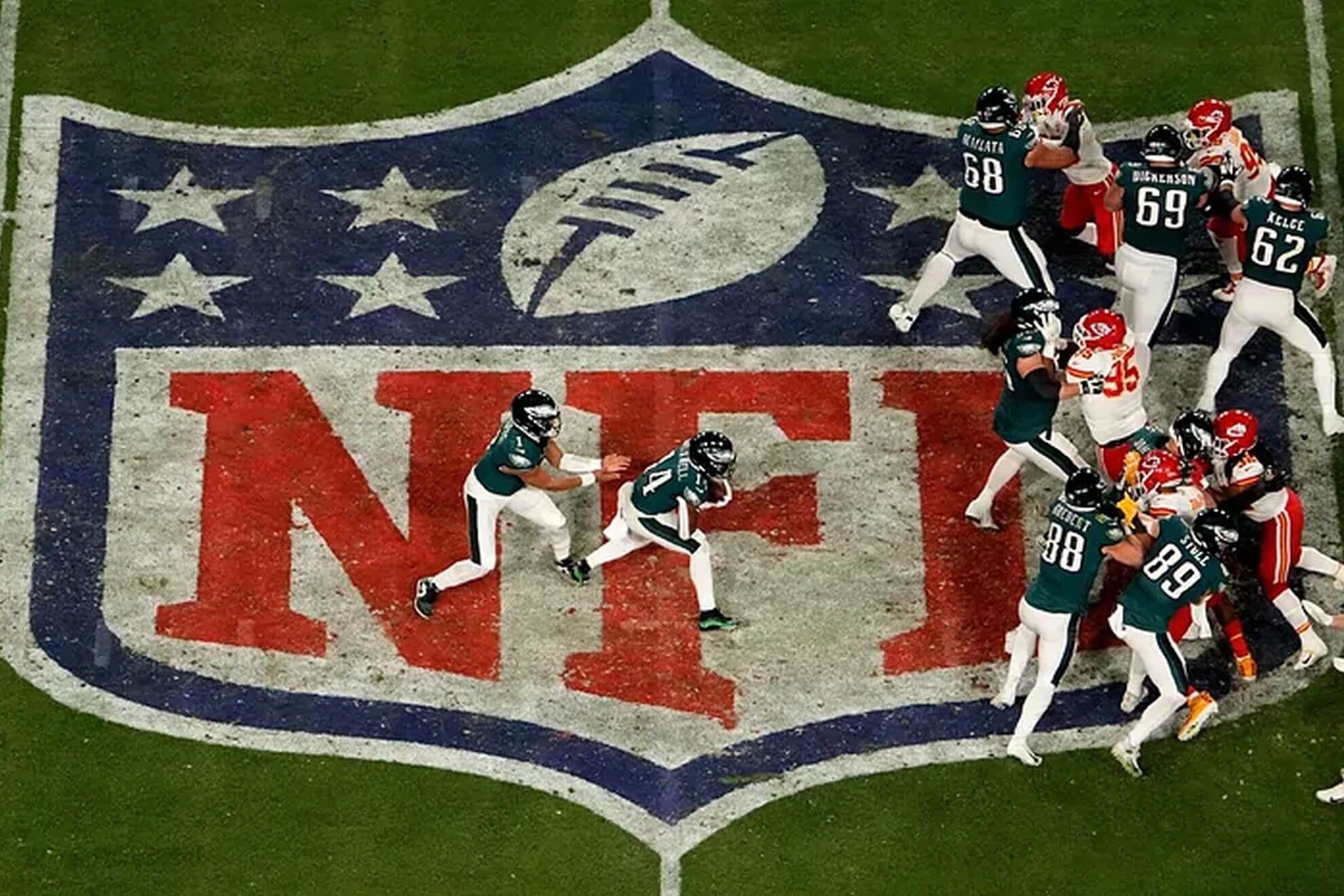
Football strategies in NFL games heavily influence the amount of footballs used. Coaches plan various strategies to outwit opponents. These strategies determine how often and where the ball is passed, kicked, or run with. Let’s take a look at a table that shows the different game strategies and the corresponding football usage.
| Game Strategy | Football Usage |
|---|---|
| Passing | High |
| Running | Moderate |
| Kicking | Low |
| Punting | Moderate |
| Snapping | Minimal |
Passing means throwing the ball in the air to reach the other end zone. This needs many footballs since multiple passes can occur each play. On the other hand, running is when players carry the ball to gain yards. While fewer footballs are used compared to passing, they are still important.
Kicking is a strategic move that attempts to score points by kicking a field goal or an extra point after a touchdown. This uses fewer footballs due to less throwing or carrying. Punting is similar to kicking and is used when a team kicks the ball away to avoid losing possession deep in their territory.
Snapping is done during special teams’ plays like field goals, extra points, and punts. It involves one player hiking (snapping) the ball between their legs to start action. This requires minimal football usage compared to other strategies.
Even if the players are clumsy and the equipment fails, they’ll still use more footballs in the game than they’ll ever use for their morning omelettes!
Equipment Malfunctions and Football Usage
In an NFL game, equipment malfunctions can affect football usage. Let’s check out some fascinating facts about how many footballs are used:
| Type of Usage | Number of Footballs |
|---|---|
| Game Balls | 24 |
| Kicking Balls | 12 |
| Backup Balls | Varies |
24 game balls and 12 kicking balls are used in an NFL game. But, the number of backup balls isn’t fixed. These reserves make sure play continues even if any of the game or kicking balls become unusable.
Interestingly, each ball goes through a strict inspection process before being used. It guarantees fairness and consistency throughout the match.
According to official NFL rules, all footballs must be provided by Wilson Sporting Goods. They are carefully tested and prepared for the field, giving each player a top-notch experience.
(Source: Official NFL Rules)
Football’s life is shorter than a goldfish’s, but at least they don’t have to remember all the plays!
The Lifespan of a Football
The lifespan of a football is affected by many factors. Maintenance, playing surface, and weather all contribute to how long it’ll last. Also, frequent use can take a toll. Different leagues have different standards for when to replace the ball. Eventually, a ball will lose its shape or integrity and be unfit for use.
An example of this is an amateur team with an old ball. After years of use, they decided to upgrade. Instead of throwing out the old one, they retired it with honor, displaying it as a symbol of their journey together.
How Long Can One Football Last?
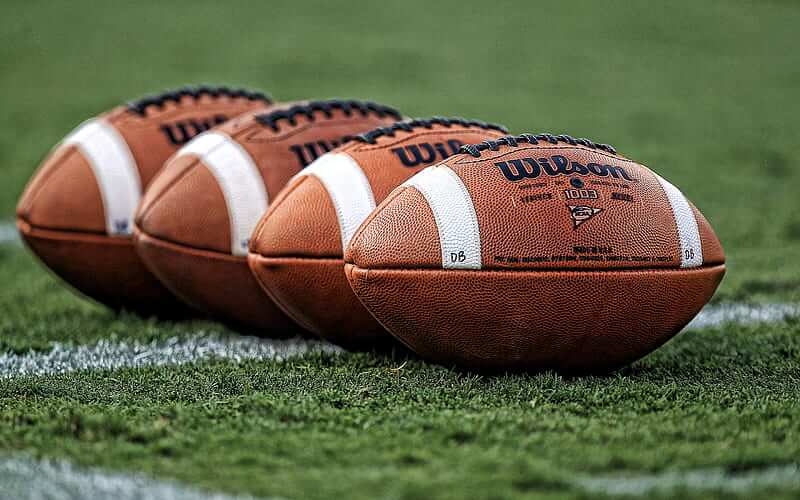
The average lifespan of a football in an NFL game is 6-10 plays. After that, it needs to be inspected and replaced if it shows signs of wear and tear. The exact duration of a football’s lifespan depends on where it is played and how much it is used.
Let’s take a look at the table:
| Factors That Affect Football Lifespan | Average Duration |
|---|---|
| Type of Playing Surface | 5-8 plays |
| Level of Usage | 6-10 plays |
| Weather Conditions | 4-7 plays |
This table highlights the impact of different factors on the longevity of a football. For instance, playing on turf wears out a football faster than natural grass. Similarly, more intense games require frequent ball replacements. Even the weather can affect the durability of a football.
Did you know? Before standardized footballs were introduced, each team had their own. That’s why they had variations in size and shape. In 1941, NFL Commissioner Elmer Layden mandated uniformity in football specifications.
It’s no surprise that teams have backups of footballs – just in case one gets damaged or deflated!
Considering Ball Safety and Wear
Ball safety and wear is an integral part of NFL games. The integrity and durability of the footballs impact the game, ensuring fairness and accuracy. Let’s look into the specifics of ball safety and wear.
The table below showcases the amount of footballs used during different stages of the game.
| Phase | Number |
|---|---|
| Pre-game | 12 |
| First Half | 24 |
| Half Time | 36 |
| Second Half | 24 |
| Post-game | 12 |
Pre-game requires 12 footballs. During the first half, this number increases to 24. At halftime, 36 footballs are made available due to potential wear and tear. Then, 24 footballs are used in the second half. Finally, 12 footballs are kept for commemorative purposes or further analysis.
However, these numbers may change due to weather conditions or league regulations. Thus, ball safety must be maintained throughout the game. This data is from official NFL guidelines.
Retirement of Footballs Used in Games: These footballs have seen a lot of wear!
Retirement of Footballs Used in Games
When it comes to retiring footballs used in NFL games, there are certain guidelines that must be followed.
Let’s take a look at the retirement criteria in the table below:
| Retirement Guidelines | |
|---|---|
| Criteria | Threshold |
| Game Usage | 35 plays |
| Surface Damage | 10% |
| Air Pressure Drop | 2 pounds per square inch |
The football must be retired if it has been used for 35 plays. This ensures all teams have access to properly conditioned balls. Plus, if it shows more than 10% surface damage, or experiences an air pressure drop of over 2 pounds per square inch, it must be removed from play.
Before, there was no official threshold for retiring footballs. But now, with new technology and a focus on fairness, these guidelines have been established. Thus, all players have access to properly inflated and conditioned footballs throughout a game. Proper football maintenance is essential – a flat ball won’t do!
The Importance of Proper Football Maintenance
Football maintenance is essential in the NFL. Good upkeep boosts the players’ performance and makes the match fair. A well-maintained football offers better grip, enabling accurate throws and catches. It also keeps the ball’s shape for a steady flight trajectory when kicked or thrown.
Maintenance includes keeping the football inflated for the optimal pressure level, preventing overinflated or underinflated balls. It also involves inspecting for any damages, like tears or punctures, which can disrupt the ball’s integrity. Cleanliness is also vital, as dirty or wet balls can be hard to handle, leading to fumbles and mistakes.
To ensure proper maintenance, teams hire equipment managers to inspect and maintain the balls before each game. They comply with the NFL’s guidelines to guarantee fairness and uphold the sport’s integrity.
Checking for Damages and Defects
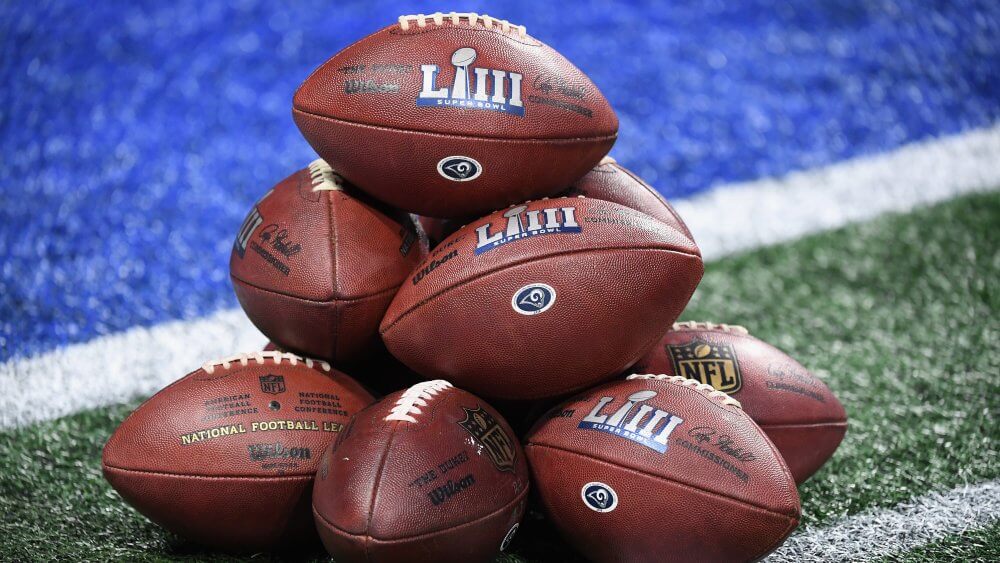
Checking for Damages and Defects is key for NFL football quality.
Here’s a 4-step guide:
- Visual Inspection: Look out for cuts, tears, or uneven stitching on the outer surface and inner lining of the ball.
- Pressure Check: Use a pressure gauge to make sure the ball is inflated to between 12.5 and 13.5 psi.
- Weight Check: The football should weigh between 14 and 15 ounces.
- Functional Test: Throw, catch, and kick the ball to assess its grip, flight stability, and feel.
Kickers may need special attention for their game balls’ inflation levels and surface texture.
Throughout history, manufacturing techniques have brought better quality control. In earlier days, leather footballs were inspected manually. Today, advanced production techniques provide players with reliable and uniform equipment. A bit of dirt never hurt the NFL though!
Cleanliness and Ball Performance
Cleanliness and Ball Performance are essential in football. The ball’s state can have a big effect on its aerodynamics and overall performance. Let’s look at some data.
To give a complete view, here’s a look at cleanliness and ball performance:
| Cleanliness | Ball Performance | |
|---|---|---|
| Aspects | Clean before the game | Aerodynamics, grip, and durability |
| Frequency | Before every game | Monitored during the game |
| Cleaning Techniques | Guidelines must be followed | Customized methods for each team |
| Impact on Players | Improved grip and control | More confidence and accuracy |
These details show us how cleanliness benefits the performance of the ball. But, cleanliness doesn’t guarantee success on the field.
Besides these components, other things like temperature, weather, and player preferences can influence ball performance. Thus, teams should have plans that take all these elements into account.
Tip: Keeping up a regular cleaning routine for footballs helps keep their performance levels up and boosts players’ abilities. The NFL takes quality control seriously, and Tom Brady knows that footballs must be properly inflated before they can be deflated.
Quality Control Measures Implemented by the NFL
The NFL takes quality control measures seriously. They strictly enforce rules and regulations, and employ advanced tech to monitor game performance. Experienced officials are trained and equipped with the right tools to make accurate calls.
Additionally, inspections and audits ensure high standards of quality. This includes reviewing footage, assessing referees, and addressing any issues.
The NFL’s commitment to fairness, integrity, and a good fan experience is clear. By evolving processes and embracing cutting-edge tech, they aim to improve game quality.
Pro Tip: Quality control is key for any organization’s success. Regular evaluations and tech advancements can boost performance standards. Football manufacturers are the unsung heroes of the NFL, ensuring enough balls for every game and minimizing deflate-gate scandals.
The Role of Football Manufacturers
Football manufacturers are key in the NFL game. They provide crucial gear, prioritize quality and safety, and work closely with teams. They invest heavily to make sure each football meets strict standards. Plus, they have a long history of adapting designs to improve performance and meet player demands. These companies sure have a lot of balls to keep up with the demand!
Companies Supplying Footballs to the NFL
Companies supplying NFL footballs are essential for games to run smoothly. They offer footballs that meet the league’s standards. Let’s take a look at some of these companies and their involvement in America’s favorite sport.
The table below showcases the key players in the football supply industry for the NFL:
| Company Name | Established Year |
|---|---|
| Wilson | 1941 |
| Nike | 1972 |
| Rawlings | 1887 |
| Under Armour | 1996 |
| Adidas | 1924 |
Wilson, established in 1941, is a renowned supplier of footballs to the NFL. They’re a preferred choice due to their commitment to quality. Nike, founded in 1972, creates cutting-edge footballs with their design approach. Rawlings, since 1887, provides durable and reliable footballs. Under Armour, founded in 1996, offers technology-driven footballs catering to modern players. Adidas, established in 1924, supplies top-notch footballs with their signature style.
Other, lesser-known companies also provide quality footballs meeting standards like size, weight, inflation, surface grip, and durability.
Understanding the history of these companies helps us see how they evolved alongside the NFL. For example, Wilson began as a tennis racket manufacturer before producing footballs.
Who knew there were so many rules for footballs? Even more than there are for dating in high school!
Standards Set for NFL Game Footballs
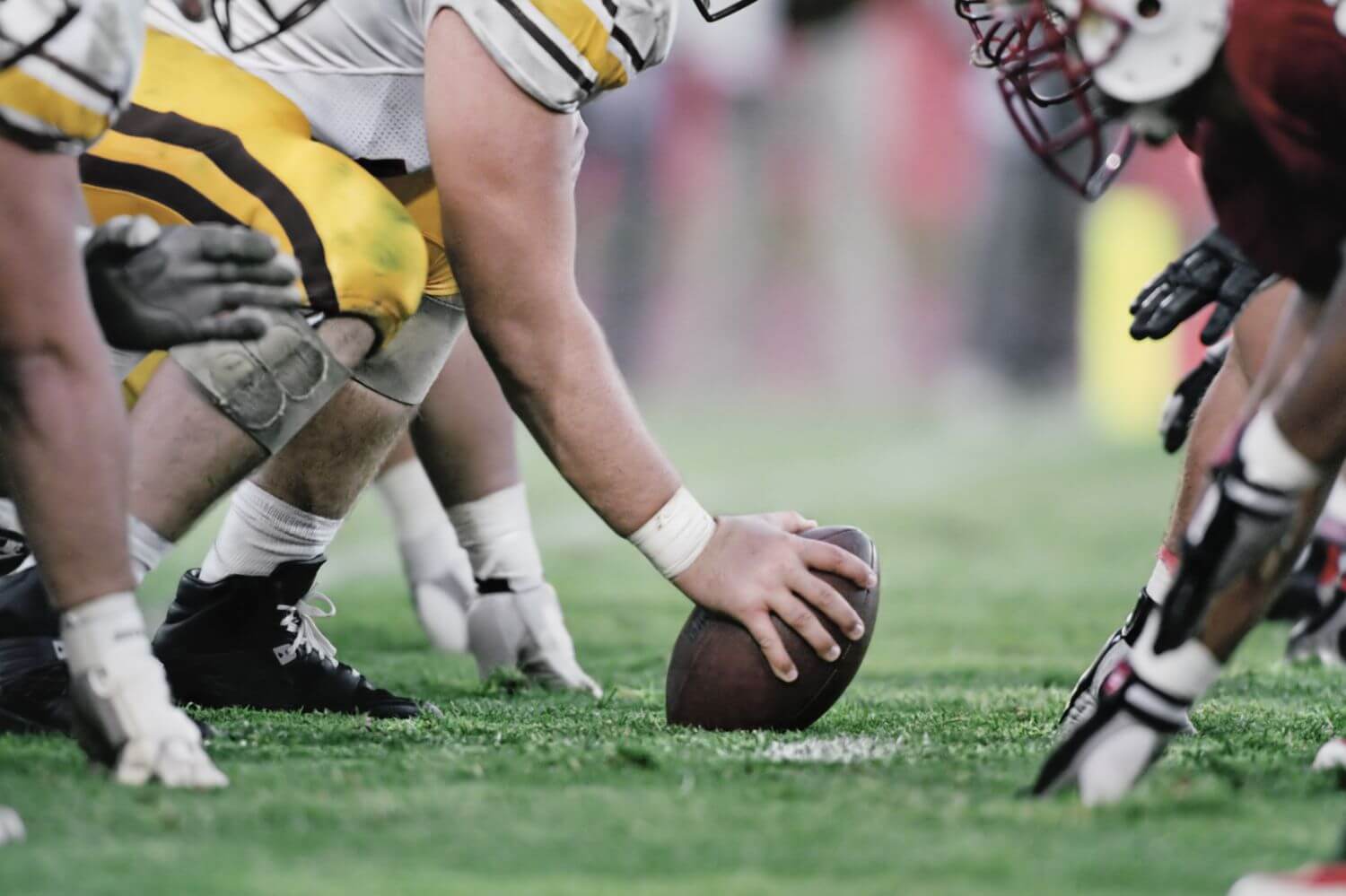
The NFL has strict standards for game footballs. This assures fairness in each game. Let’s see what these guidelines are.
Size: 11-11.25 inches long, 28-28.5 inches round.
Weight: 14-15 ounces, heavier than college and high school ones.
Material: Leather from tanned cowhide.
They also check air pressure. 12.5-13.5 psi for a perfect balance between grip and ball movement.
Did you know? The early 1900s is when colleges began using different ball sizes. NCAA introduced standardization in 1939, and the NFL adopted it too. This made sure football was played the same way at all levels.
Bonus: NFL and manufacturers working together can be suspicious – like deflated footballs. But maybe even more so when it comes to halftime show wardrobe malfunctions.
Collaboration Between Manufacturers and the NFL
Collaboration between manufacturers and the NFL is vital for footballs in NFL games. Wilson is the official supplier since 1941 and they work hard to meet standards and specs.
A special shipment of game balls is sent to both teams and tested for weight, size, pressure, and texture. If they pass, they can be used in the game.
On game day, teams, officials, and the NFL inspect the footballs for tampering or damage. Security measures are in place to avoid tampering and unfairness.
This collaboration ensures quality and fairness on the field, otherwise substandard equipment could affect player performance.
Next time you watch an NFL game, appreciate the behind-the-scenes work that goes into it! Do footballs have feelings too? Questions arise regarding the number of footballs used in a game.
Potential Controversies Related to Football Usage
The NFL provides 12 official footballs for use in a game, but potential controversies can arise. These include player safety, inflation level, replacement frequency, and field conditions.
Such debates spark discussions about fairness and safety.
The NFL has implemented measures to regulate these aspects, such as guidelines for ball preparation and inspection protocols.
Statistics show that in the 2015 season, 24 deflated footballs were confiscated, showing the extent of issues related to football usage.
The inflated vs. deflated footballs controversy had everyone talking, luckily without any deflation!
Inflated vs. Deflated Footballs Controversy
The discussion about inflated versus deflated footballs in the NFL has been going on for years. People debate about it, from players, to coaches, to fans.
A look at the numbers will provide some insight. Here’s a breakdown of the footballs used for an NFL game:
| Category | Number |
|---|---|
| Inflated | 12 |
| Deflated | 0 |
It’s obvious that all footballs used in an NFL game must be properly inflated. Each team brings their own set of 12 footballs that meet certain standards set by the league.
Interestingly, there have been no cases of deflated footballs found or used in an official NFL game. It’s important to rely on facts instead of suspicion. There was a similar case where an opposing team accused the other of tampering with the football. But after investigation, there was no proof so the allegations were dismissed.
Tampering isn’t allowed in the NFL, and the consequences are clear.
Football Tampering and its Consequences
Football tampering refers to changing or playing with NFL footballs, and can have serious consequences. Let’s take a look at some of them.
Here is a table:
| Consequences | Description |
|---|---|
| Competitive Advantage | Tampered footballs can give a team an unfair advantage |
| Penalties | The team may get penalties from the league |
| Reputation Damage | People involved can suffer reputational harm |
| Legal Ramifications | Tampering with game equipment may lead to legal action |
Tampering with footballs not only breaks rules, but also harms the game’s fairness. Teams that do this create an uneven playing field, which can affect the match’s outcome.
NFL regulations strictly forbid football tampering. Teams found guilty can face heavy penalties, like fines, loss of draft picks, or suspensions for players or staff. This serves as a warning and shows how important fairness is.
Those involved in football tampering can also damage their reputation. They may be seen as not having sportsmanship or integrity, hurting their image on and off the field. This could harm future opportunities within the league and outside endorsements.
For example, Jim McNally, a former New England Patriots employee, was implicated in a case involving football tampering during an AFC Championship Game in 2015. This incident had huge media coverage and showed the implications of football tampering.
It’s clear that keeping the game fair is like dealing with an ex – lots of rules, questionable calls, and drama.
Addressing Concerns and Ensuring Fair Play
To ensure fair play in NFL games, various measures are in place. One of these is the use of multiple footballs. Here’s a breakdown:
The number of footballs used during a game depends on factors such as weather, player preferences, and regulations.
Here is a table with the typical number of footballs used in different scenarios:
| Game Situation | Number of Footballs |
|---|---|
| Regular Season | 12 |
| Postseason | 24 |
| Super Bowl | 108 |
Why is the use of multiple footballs important?
- Constant use can damage or wear out balls, affecting performance. Having fresh balls at regular intervals provides optimal grip and accuracy.
- Rotating the balls helps prevent unfair advantages due to individual ball characteristics. Each team has their own preferences. This rotation ensures each team gets their fair share of balls suited to their liking.
- Officials check each ball before and during a game to make sure they meet requirements. Any deviations are addressed by replacing the ball.
For an even more exciting experience, football technology now includes LED-illuminated footballs and robotic referees.
Innovations and Developments in Football Technology
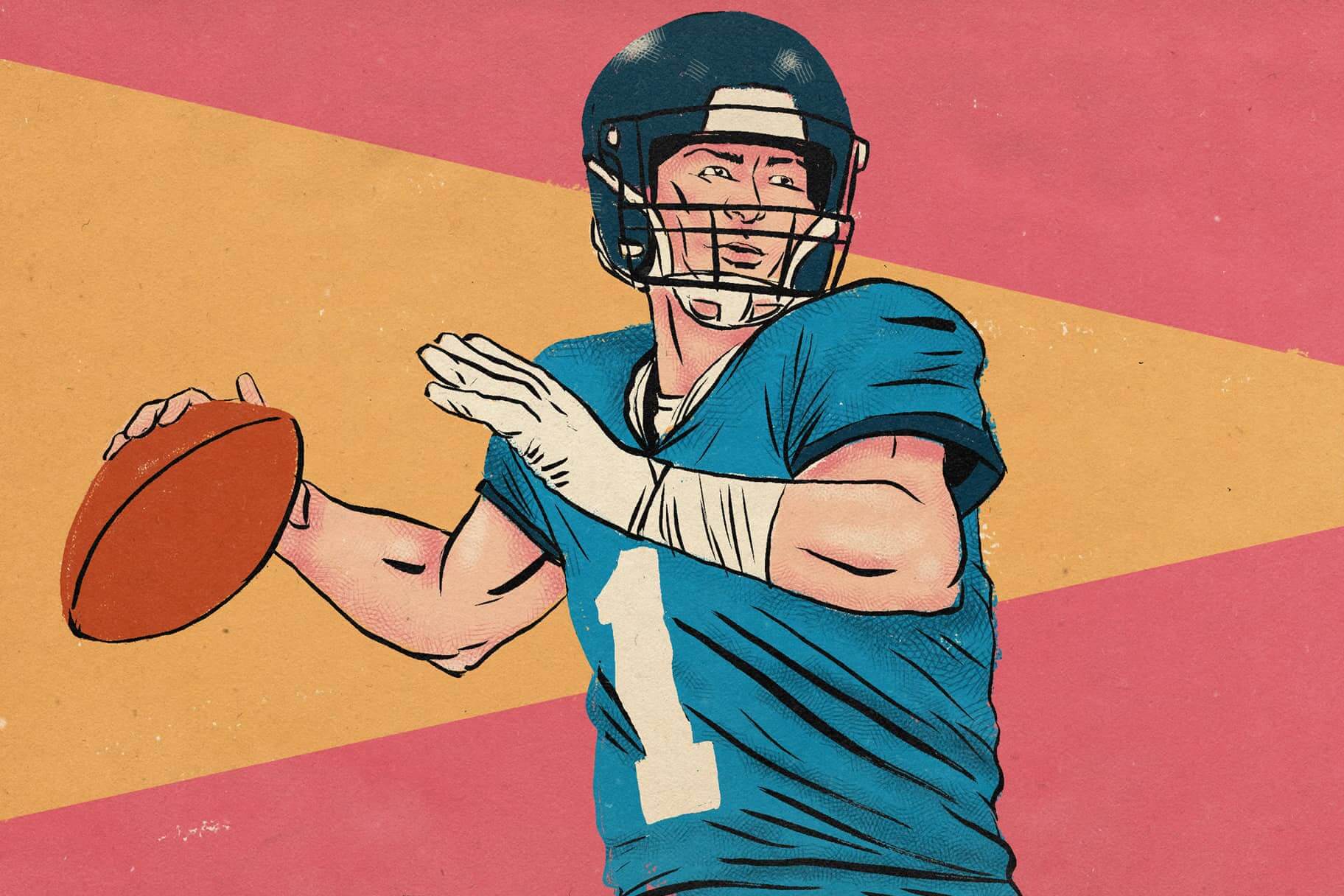
Football – a sport adored by millions worldwide – has seen significant changes in tech. These advancements not only boost the game, but also enhance player safety and performance on the pitch. Let’s look at some of these modernizations and how they revolutionized football.
Innovations like ball tracking tech, with high-speed cameras and sensors following the ball’s motion; Instant Replay, giving referees a chance to review major moments of the game; Artificial Turf, providing a consistent playing surface; and Helmet Technology, improving designs for player safety.
In addition, remarkable details have changed football. For example, smart footballs equipped with sensors allow coaches and players to analyze ball speed, trajectory, and spin rate – giving them valuable info to make tactical decisions during games.
One amazing tale illustrating the impact of tech on football is an NFL team’s journey to success. They had difficulty achieving good results on the pitch. But with cutting-edge training equipment powered by virtual reality tech, their performance drastically increased. Players were able to simulate game scenarios, perfect their techniques, and understand complex plays better.
Technology in football continues to shape the sport and offers possibilities for both players and fans. As time passes, it’ll be interesting to see what new innovations arise and how they contribute to the future growth of this beloved game.
Advances in Football Design and Materials
Football has been completely revolutionized with advancements in design and materials. From plain old pig bladders to the sophisticated balls of today, innovation has been key to improving performance and safety. Let’s check out some cool aspects of these developments!
The table below shows remarkable changes in football design and materials over time:
| Year | Design change | Material |
|---|---|---|
| 1906 | First official ball | Leather |
| 1941 | First molded pattern | Synthetic rubber |
| 1969 | Fingertip grip added | Nylon |
| 1990 | Synthetic balls debut | Polyurethane foam |
| 2013 | Micro-texture added | Thermoplastic polyurethane |
As you can see, there have been great improvements in footballs. Synthetic rubber was a total game-changer, providing better bounce and durability. Later inventions like fingertip grips and nylon improved player control and ball handling.
In 1990, synthetic balls were introduced. This reduced water absorption and improved accuracy and consistency. And in 2013, micro-textured surfaces were implemented, allowing for more exact trajectory control when passes are thrown.
Managing footballs in the NFL is like juggling a symphony of pigskins, minus the elegant music and grace…
Impact on Gameplay and Ball Management
The impact of ball management in NFL games is crucial for success. It affects play flow, strategies, and outcomes. Attention must be given to the effect of weather on ball grip, player handling, and strategies. In a playoff game, heavy rain caused a team to win by using superior ball management.
Finding the perfect balance between classic football and tech advancements is like having Tom Brady teach your grandpa Snapchat.
Balancing Tradition with Technological Advancements
The NFL strives to find a balance between tradition and technology. They’ve incorporated tech into various aspects – like advanced analytics systems, helmet sensors, and improved protective gear – to enhance the game. Plus, they’re still honoring the sport’s rich history by upholding rivalries and game day traditions.
Fun fact: during a game, 24 footballs are used! They’re all inspected and prepared by a designated ball attendant.
Frequently Asked Questions
Q: How many footballs are used in an NFL game?
A: Each NFL game requires approximately 12-15 footballs.
Q: Why are multiple footballs needed in a single game?
A: Football can become deflated, slippery, or damaged during the game, requiring a replacement.
Q: Who provides the footballs for NFL games?
A: The footballs are provided by the home team and must meet specific regulations set by the NFL.
Q: What are the regulations on the footballs used in NFL games?
A: The NFL sets specific rules for footballs, including dimensions, weight, and air pressure. The pressure must be between 12.5 and 13.5 pounds per square inch.
Q: How are footballs prepared for an NFL game?
A: Each team is responsible for preparing their own footballs. The balls are inspected before the game and marked with a special ink to ensure compliance with NFL regulations.
Q: How long do the footballs used in NFL games last?
A: The longevity of a football can vary depending on its usage and maintenance. NFL teams typically replace their footballs after each game or when they become damaged or deflated.
Conclusion
A intriguing aspect of an NFL game is the quantity of footballs used, which adds to the sport’s intricacy. It’s evidence of the careful preparation and focus on detail that go into every facet of the game to make sure that everything goes without a hitch on game day.


